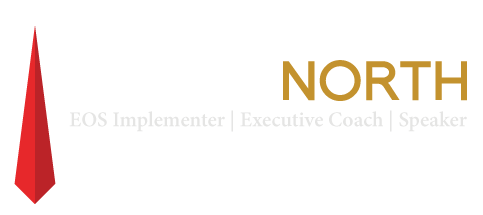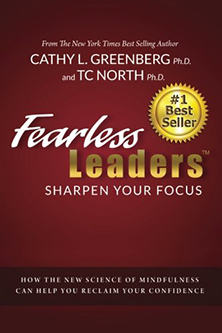This is part 6 in the “How to Build Confidence” video series
Is success the result of high levels of self-confidence, or is greater self-confidence the result of success? It’s a chicken-and-egg question. Which comes first?
It depends.
Think about self-confidence and success as being on the feedback loop with each other. High levels of self-confidence help create greater success, and success helps create improved self-confidence.
To join speaker agent Kim Tracy and me in for this discussion, you may either watch the video or read the text below.
[vc_video link=”https://youtu.be/I_X0ni0BLuY”]
Kim: Hi, I’m Kim Tracey with the Maxwell James Speaker Agency, back with TC North. This is actually really, really fun, you guys. In our recent videos, we’ve been focusing on different aspects of confidence, and you’ve mentally trained elite athletes, CEOs and tops sales reps. All too often we hear people actually saying, “He’s confident, so he’s going to do well,” or “She’s successful because she’s confident.” Can you address this chicken or the egg question for me?
TC: Yeah, lots of people ask me, “Does confidence breed success, or does success breed confidence?” And the reality is it’s both. It’s really a feedback loop. If you think, for a moment, of a time when you were successful — you just had a success — you’re going to come into the next event feeling confident, right?
Kim: Right.
TC: Everybody knows that. Everybody’s had that experience. So we know that success breeds confidence. People come to me when they’re needing more confidence, they want to have confidence, or they’re going to a higher level of challenge. How can you be more confident at this higher level of challenge that you’ve never been exposed to before? You have to use your own mind to develop that confidence. You have to mentally train to develop your confidence so then you can have success. Does that make sense?
Kim: It does. So tell me, what’s a specific technique to help build confidence that involves success?
TC: One of my favorite techniques is a confidence anchor. People in my audiences and people that I’ve done individual coaching with, most of them have learned a confidence anchor because it has real universal acceptance and universal applicability. I have two confidence anchors. I’m going to describe them, and then we can talk a little bit about how to develop them if you want.
So going back decades (and this is going to date me, Kim), remember when the first Rocky movie came out, Rocky I?
Kim: Why are you dating me with you? You need to just date yourself! Yeah, no, I have no idea when the first Rocky movie came out!
TC: It was, I think, the late 70s.
Kim: Oh good Lord, no. I don’t remember that!
TC: Yeah, you were only 1!
Kim: I know. Exactly!
TC: When that came out, it was very motivational and inspirational. I loved the movie, the story of the underdog, how Rocky stands in the ring and does his best, even though he didn’t win that particular bout. But I loved the inner game that the movie showed, and I think it really inspired lots of people back then. I was doing athletic things back in those days as well as professional things, and I started tying that theme song to all my best moments of life. So now, decades later, I’ve continued to do that.
All I need to do is sing a little bit of that Rocky song, and I can even sing it off-key (starts singing), and notice what my body does. It immediately wants to get taller, straighter and stronger. I can’t not do that (to use a double negative), because it’s so ingrained in my nervous system now. My brain fires all the chemicals that send a confident message to my body, because I’ve literally done this tens of thousands of times. That’s how much practice (I’ve had) and how strong my neural network is.
Now that theme song doesn’t work for my audiences and the folks I’m coaching, so I’ve developed something that I think does have universal appeal. Say the word “yes.” So far, no one has ever found a negative piece to the word “yes.” It’s completely positive.
Then, to access more of the brain: When you say yes, what you’re doing is using the verbal part of your brain, and you’re also hearing it, so you’re using the auditory part of your brain when you say it out loud.
If you add a body movement to it, you’re actually adding a different part of the brain, which is the motor cortex — a very large part of the brain — so we use this. There are four movements that have universal acceptance of excitement, joy and celebration. And that is pulling one arm in like this (pulls one arm down the side of the body) or pulling both arms in (starts with arms in field goal position and pulls downward, parallel with body), or shooting one arm up or both arms up (the opposite of the first two body motions). All countries — doesn’t matter, North American, Asian, South American, U.S., etc. — well, I guess we’re North American, aren’t we?
Kim: (laughs wildly) It’s OK. He does know about NAFTA. Don’t worry y’all.
TC: NAFTA, what after another year? OK, we’re not going there. …
Kim: Mmm hmm …
TC: What’s great about that is that it’s universal. It seems to be in every culture; it doesn’t matter what your background is. If you use the word “yes” (and uses one of the body movements we just described) you use those as your anchors. So every time you have a good success in your life, you just think about that and say “yes!” and you just keep doing that again, scores and scores and scores, hundreds and hundreds, of times. And, pretty soon, you have such a strong neural network that all you have to do is anything close to that and it shoots off that neural network in your brain that has all your confident memories in it. That one motion sends that message to your whole body (just like my four notes is sing form the “Rocky” movie themes song do), and so you feel strong, you feel in your confident self. Does that make sense?
Kim: It does. Now, TC, I want to get a little funny with you. I have the benefit of having worked with you for a while; I’ve attended some of your workshops. I want you to demonstrate for the viewers your “yes, yes, yes, yes!”
TC: Ha ha! Oh, I’ve been set up! I’ve only ever done this on my CD programs. I’ve actually never done it live.
Kim: Three, two, one …
TC: All right. I owe you, ma’am! So the “yes, yes, yes, yes!” A little context with that is, again, “yes” is a positive word. I like bringing my body in. I’m very visceral, so I like getting my body involved with my confident word. There are times where maybe I’m a little bit tired or whatever, and I think this came from when I was negotiating a big deal between two companies, and I was actually negotiating both ways. If one company would hire me, then the other company would hire me.
I was right in the middle, and I had to convince one of them that the other was going to be working with me, even before they had fully committed, etc., etc. Long story, but it was pretty funny. I ended up getting both of them. This is what I was doing in between talking with each to be confident (sets down microphone, steps back, proceeds to jump back and forth from one foot to the other while pumping alternating arms into the air, shouting, “Yes, yes, yes, yes!” repeatedly in rhythm with the arm pumps). I was fully confident that each one was going to hire me when I did this, which allowed me to say so with integrity to the other company.
Kim: Hence, the Village People. Ha ha!
TC: Are you happy now?
Kim: I’m very, very happy, and our viewers now feel very excited and very motivated. So can you tell them how you develop a confidence anchor?
TC: By doing what we just did. That’s the confidence anchor. You can do the “yes, yes, yes, yes!” but this is the anchor (pumps arm down in front of body). It’s the yes, it’s the arm motion. This is the condition response if you remember Psych 101 in college, Pavlov’s dog salivating at the bell. OK, the arm pump is the bell, if you will, the food is the confidence memory. So you’re tying these two things together so that now the arm motion actually sends the message to your brain: “This is confidence. Be confident now.”
Kim: Perfect. Any lasting tips or thoughts for our viewers?
TC: No. That’s it for today, ma’am. You got me dancing. I’m done!
Kim: I got him good, you guys! If you would like to bring TC North in for an amazing keynote, workshop or seminar, contact me, Kim Tracey, through MaxwellJames.net. Thank you, TC.
TC: You’re welcome!
My speaker agent Kim Tracy at the Maxwell James Agency produced this video. Please contact her here if you’re interested in having me deliver a keynote, workshop or webinar on building confidence and personal power and becoming more mindful. Or contact me here if you’d like to discuss personal work with me to build your confidence and presence.


